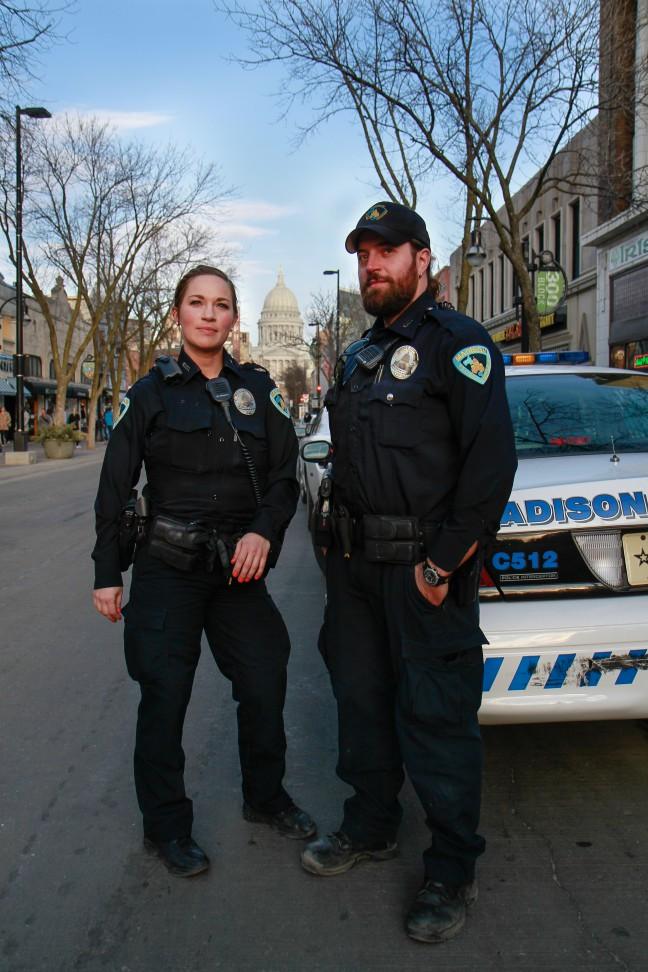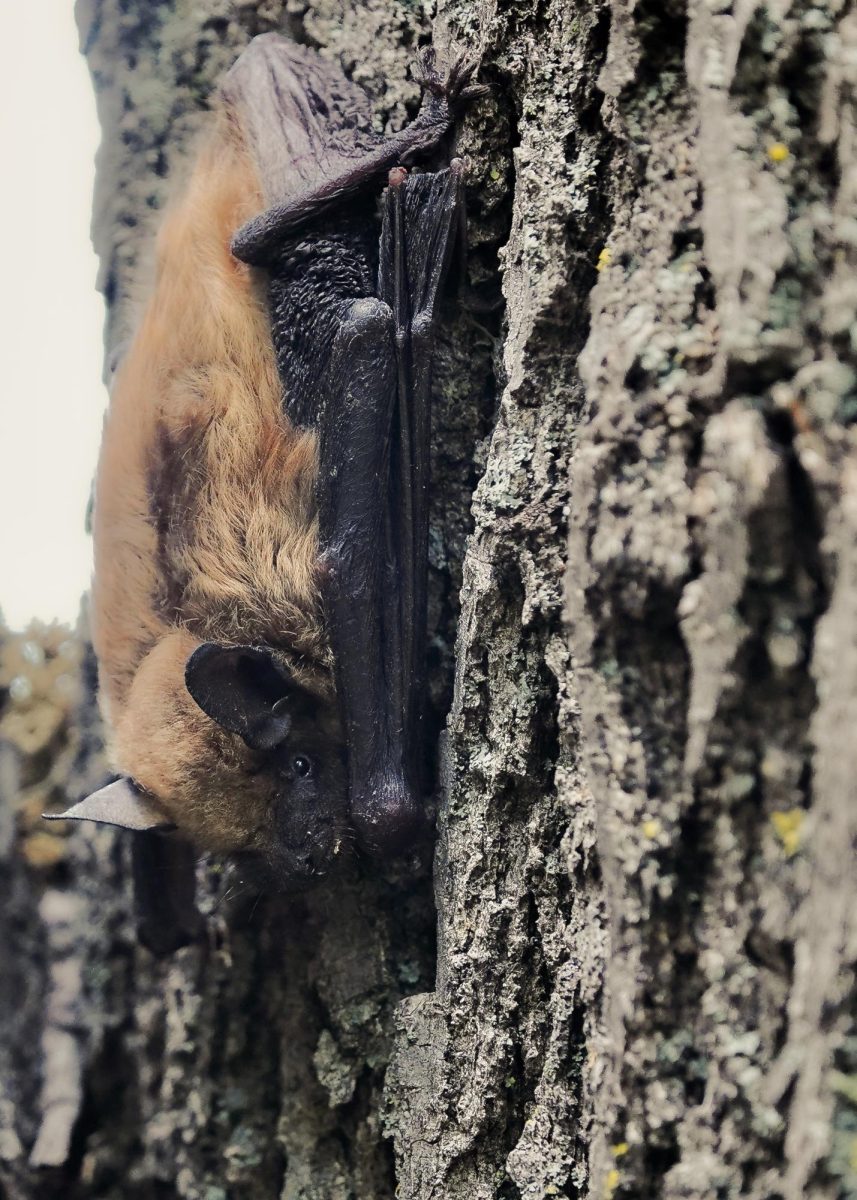In the wake of the tragedy of Tony Robinson, community members have increasingly expressed frustration at institutional racism in the justice system. In the midst of this, Madison Police Department continues its initiatives in attempt to be ahead of the curve in the way it handles issues of race and diversity.
Community leaders, such as M Adams of the Young, Gifted and Black Coalition, have been outspoken about holding Madison City Police Chief Michael Koval and Mayor Paul Soglin accountable for the shooting of an unarmed Tony Robinson, who was killed by MPD officer Matt Kenny earlier in March.
“The community and young people are not going to wait until DCI [Division of Criminal Investigation] and MPD decide to be different,” Adams said.
Community organizers strategize next steps after last night’s officer involved shooting
A leader in cultural competency
For its part, MPD Captain Tom Snyder said Madison’s police force has been a longtime leader in steps taken to build a diverse and culturally competent force. According to a report in August 2014, slightly more than 10 percent of MPD sworn officers were African American, about six percent Hispanic and about 30 percent women.
“We take hiring seriously,” Snyder said. “We go to six different states. We go to large cities where it’s likely we’ll find a diverse population [of recruits].”
Additionally, Koval recently mentioned implicit bias and cultural competency training as ways in which MPD has proved itself a progressive organization.
Implicit, or unconscious, bias is any bias of which one is not aware. It is common in people who are opposed to discrimination, but treat specific individuals differently according to social group, University of Wisconsin psychology professor Markus Brauer said.
In 2006, MPD began the first of its efforts to address unconscious bias in the department. Upon meeting UW psychology professor Patricia Devine at a Stanford University conference for social scientists, police and legal professionals, former police chief Noble Wray requested she provide formal training to police officers on implicit bias especially related to shootings.
But before the introduction of implicit bias training, MPD had required other cultural competency training for new officers since the late ’80s, MPD Captain Tom Snyder said. He said currently MPD requires officers in their preservice academy to undergo at least 50 hours of training focused on cultural competence, implicit bias and serving the mentally ill.
“If we don’t know how to understand others, we are ineffective,” Snyder said.
Devine said when she first led the training in 2006, she informed each MPD officer about the current research surrounding unconscious bias and aimed to increase awareness of racial issues. She said since the initial training, all new officers have received the training as well.
“I would say the vast majority of [the officers] were very interested, engaged and open to learning what [we] had to say,” she said.
Devine said in 2006, she was not able to offer specific strategies to address implicit biases because she had not yet done research on their effectiveness. She later shared new findings with MPD however, officials said they have yet to share these strategies with officers.
Strategies she shared included stereotype replacement, an approach in which an individual takes note of instances of stereotypic responses and mindfully replaces them with non-stereotypic ones.
“When you think about blacks you might think they’re lazy, criminals or not intelligent,” Devine said. “But surely we can think of examples of people who are not consistent with stereotypes. You could think about Barack Obama, who is intelligent, hard working and successful.”
She also recommended avoiding generalizations by focusing on the individual as opposed to making assumptions about a person based on stereotypes. She said the best approach is to simply get to know specific details about an individual before making judgments.
Devine said simply increasing contact with those of other races and ethnicities would go a long way to addressing implicit bias as well.
To this effect, Synder said MPD has taken various steps to reach out to minority communities. He said MPD has continuously met with religious leaders as well as community development organizations, such as Nehemiah, which aims to alleviate spiritual, economic and academic issues in the black community.
He also said MPD has worked with the Wisconsin Innocence Project, which the UW Law School founded to educate students and reform the criminal justice system to identify and remedy wrongful convictions.
In 2014-15, MPD featured a diversity training class called “Judgement Under the Radar,” which MPD will again offer in fall. Also in fall, MPD will create another cultural competency training required of all officers, Snyder said.
Kymtana Woodly, a detective for MPD, said they will soon offer implicit bias training to which the public is invited.
Challenges in racial disparities remain
But even though MPD has offered cultural competency training for years, racial disparities, especially in the justice system, have stubbornly remained.
Young, Gifted and Black Coalition collaborating with MPD to defuse racial disparities
The 2013 Race to Equity report outlined some of these racial disparities in Dane County. These include an arrest rate eight times higher for blacks than for whites, a 54 percent black poverty rate and a black unemployment rate 5.5 times higher than whites.
With knowledge of gaping disparities and the proposal of the anti-illegal immigration law Arizona SB 1070, which led to racial profiling among officers there, MPD reflected on its own obligation to better connect with Latino and other minority communities, Woodly said.
While MPD had already created the “Amigos en Azul” program in 2004 — a grassroots effort dedicated to eliminating barriers between MPD and the Latino community — the national conversation surrounding the Arizona anti-immigration law worked itself into Woodly’s future plans for officer training.

In 2010, after attending “Tools for Tolerance,” a program in Los Angeles to help officers create diversity education programs for their home departments, Woodly and MPD worked to create an officer diversity training similar to the type that MPD had set up for years.
“How are we recognizing that everyone has biases?” Woodly asked. “If we as police officers aren’t mindful of the biases that may impact people, especially people of color, if we’re not aware of that, we can get into some major problems.”
In 2012, Woodly and MPD finally implemented a cultural competency program she had begun to formulate in Los Angeles. At the MPD training she headed, Woodly said officers received film scenario training to encourage officers to act in non-aggressive ways toward people.
At the 2012 meeting MPD also invited advocates in the African American community such as Richard Harris, the executive director for Vision Beyond Bars, a crime prevention organization.
Harris helped demonstrate to officers the many misconceptions and biases the African American community holds toward the police, which he said may contribute to increased violence in their interactions with officers.
“My world had been shaped by slavery, segregation and mass incarceration,” Harris said. “But when I started thinking about training, [MPD] needs to know how we are arriving at [negative] conclusions so the police can understand when they are stopping us what is going on.”
Woodly said to solve this issue, communication between MPD and minority communities is vital.
“We talk about it, we work together,” Woodly said. “In the past couple years our department has gotten better at saying what we do to connect with various communities. We need to continue to do that.”













